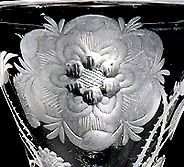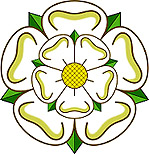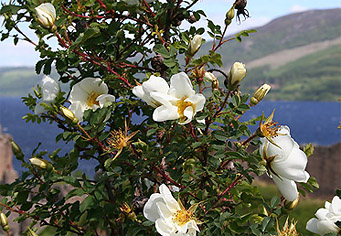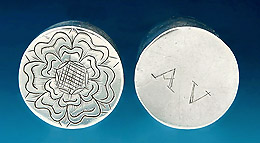|
The Cryptic Symbols
(The Glasses Linked & From Our Stock)
Part of the
Jacobite issue : "Divine Right" -
"The monarchy was inherited, and appointed by and responsible only
to God".
This
belief superseded religion, geography and time.
Societies and clubs in support of 'Divine Right' go back to the
Commonwealth era.
These groups
met in secret - either as small gatherings, or in 'clubs'.
Toasting the King's health was always a part of the ritual -
often passing a glass over a bowl of water,
toasting 'the King across the water', for those in exile.
During the George I
reign, toasting the exiled James III was serious offense.
By the mid-18th century, during the heat of the 'Jacobite uprising',
such actions had become a risk of death or at least imprisonment -
thus the cryptic
words and symbols,
so beautifully - and treasonously - engraved on Jacobite glasses.
I might add at this
point that Charles Edward Stuart had lived his entire life in
France,
hearing that he was the legal heir to the throne of England, Ireland
and Scotland.
However he spent only one year - June 1745 to April 1746 - on
British soil
- at the age of 25 -
fighting to restore the Stuart reign, the final defeat being
Culloden.
The most familiar
Jacobite symbol is the 'Stuart 6-Petaled Rose',
 
the '6th petal' being somewhat of a mystery in origin.

'Rosa x Alba'
grows all over Scotland.
It is
a bushy shrub-like rose with grey-green fern-like compound foliage
and a small 5-petaled flower.
Both the red
'Rose of England' and,
the above right white
'Rose of Duke of York', exhibit 5
petals.
However, the white rose
of glassware, symbolizing the Stuart reign,
exhibits 6 petals, and is
usually accompanied by one or two buds -
the buds referring to
James III, Charles Edward Stuart, and / or Henry Stuart.
(Note :
Henry became a Cardinal in Rome, never making claim for the throne).
In the years leading up to the final battle at Culloden
(1746),
Jacobite followers were forced to meet and plot in secret.
The 'white
rose' or 'white cockade' (a flower made from ribbon, often worn on a
hat)
became a
cryptic way to identify a supporter of 'the cause'.
Another legend tells that Bonnie Prince Charlie,
en route south to start the '45 Rebellion,
plucked a white rose from the roadside and stuck it in his hat.
One of the earliest
'Jacobite' references to the Scottish white rose
is at the birth of James III, 10th June, 1688.
This day is said to be
'the longest day of the year in which the white rose flowers'.
Below is a Huguenot
produced
English provincial silver box, West Country, c1688,
engraved to the top with the 6-petaled rose
:

Interestingly, other
such late 17th century provincial silver boxes,
engraved with 6-petal-roses, are
indeed known -
but thus far, apparently not the
exact origin of concept.
|